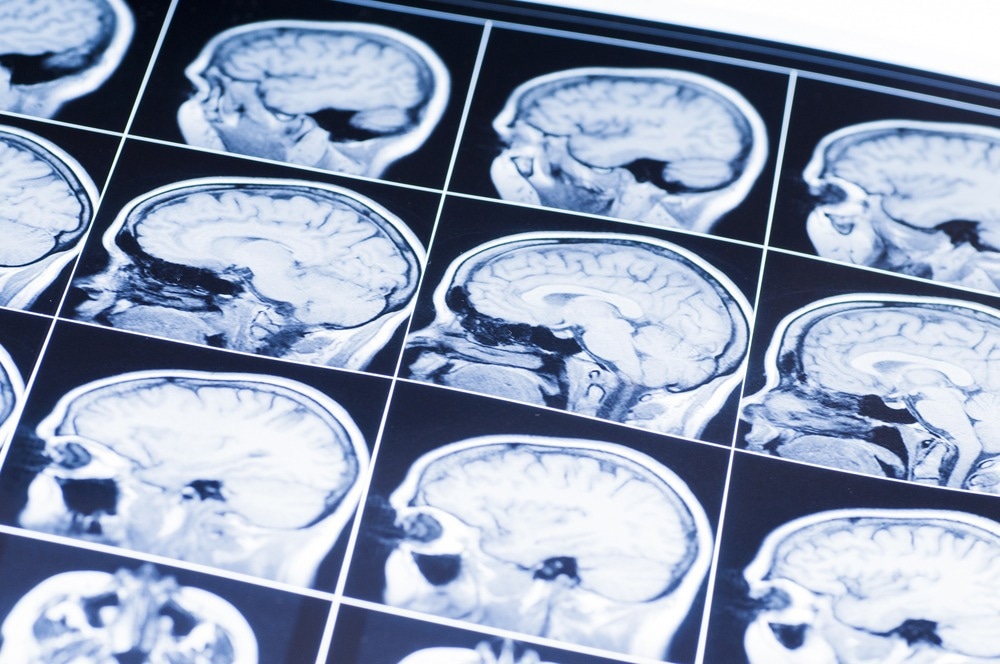Phase two clinical trials at UT Southwestern Medical Center revealed that a suspension of gold nanocrystals taken daily by patients with multiple sclerosis (MS) and Parkinson’s disease (PD) significantly reversed deficits in metabolites linked to energy activity in the brain, resulting in functional improvements. According to the scientists, the findings published in the Journal of Nanobiotechnology could eventually help deliver this treatment to patients suffering from these and other neurological conditions.

Image Credit: Labutin.Art/shutterstock.com
We are cautiously optimistic that we will be able to prevent or even reverse some neurological disabilities with this strategy.
Peter Sguigna, MD, Assistant Professor, Department of Neurology, UT Southwestern Medical Center
He directs the current MS study and works as an investigator at UT Southwestern’s Peter O’Donnell Jr. Brain Institute.
Dr. Sguigna noted that healthy brain function is dependent on a continual flow of energy to the organ’s cells via a chemical known as adenosine triphosphate (ATP). Age leads to a deterioration in brain energy metabolism, as seen by a drop in the ratio of nicotinamide adenine dinucleotide (NAD+) to its partner, nicotinamide adenine dinucleotide + hydrogen.
However, studies have shown that in neurodegenerative disorders such as MS, Parkinson’s disease, and amyotrophic lateral sclerosis (ALS), often known as Lou Gehrig’s disease, the NAD+/NADH ratio declines significantly quicker and more severely. Studies in cells, animal models, and human patients have revealed that preventing or correcting this energy deficit might result in a slower decline or even partial recovery for individuals with neurological conditions, according to Dr Sguigna.
To that purpose, he and his colleagues collaborated with Clene Nanomedicine, a firm that is developing gold nanocrystals as an orally delivered therapeutic agent for neurodegenerative diseases, including an experimental therapy called CNM-Au8. These nanocrystals function as catalysts, increasing the NAD+/NADH ratio and positively affecting the energy balance of brain cells, as proven in earlier research using cellular and animal models.
To see if CNM-Au8 was reaching its intended target in human patients, UTSW researchers enrolled 11 relapse MS patients and 13 Parkinson’s patients for two phase two clinical studies, REPAIR-MS and REPAIR-PD. These individuals underwent an initial brain magnetic resonance (MR) spectroscopic scan to assess their baseline NAD+/NADH ratio and levels of other chemicals involved in cell energy metabolism. After taking a daily dosage of CNM-Au8 for 12 weeks, they underwent a second MR spectroscopy.
The 24 patients’ NAD+/NADH ratios increased by an average of 10.4% compared to baseline, indicating that CNM-Au8 was targeting the brain as planned. By the end of therapy, various energy molecules, including ATP, had been normalized to the group mean, which might have a favorable impact.
Using a validated survey for functional outcomes in PD, researchers discovered that study patients with this condition reported improved “motor experiences of daily living” at one point, indicating that taking CNM-Au8 might alleviate functional symptoms of their disease. None of the patients suffered any unfavorable side effects from CNM-Au8.
While these findings are encouraging, Dr. Sguigna believes more research is needed. REPAIR-MS will continue to recruit people to investigate whether similar findings can be replicated in progressive MS.
Other UTSW researchers who contributed to this study included Jimin Ren, Ph.D., Associate Professor of Radiology and in the Advanced Imaging Research Center, the study's first author who headed the MR spectroscopy portion of the study, and Benjamin Greenberg, M.D., Professor of Neurology and Pediatrics, Vice Chair of Clinical and Translational Research, a Cain Denius Scholar in Mobility Disorders, and a Distinguished Teaching Professor.
Dr. Sguigna acknowledged assistance from UT Southwestern’s President’s Research Council and Physician Scientist Training Program (PSTP).
When the trials were held, Dr. Greenberg was only connected with UTSW. Following the completion of REPAIR-MS part one, he was hired as a consultant by Clene Nanomedicine.
Clene Nanomedicine financed this study.
Journal Reference:
Ren, J., et. al. (2024) Evidence of brain target engagement in Parkinson’s disease and multiple sclerosis by the investigational nanomedicine, CNM-Au8, in the REPAIR phase 2 clinical trials. Journal of Nanobiotechnology. doi:10.1186/s12951-023-02236-z